- Open today, noon to 5 pm.
- Parking & Directions
- Free Admission
The Museum as a Source of Inspiration: 2021 Summer Teacher Institute
Meet Emily Cayton, School & Teacher Programs Coordinator
Emily joined the Chrysler team in July and holds more than a decade of museum and classroom experience. She is eager to use the Chrysler’s permanent collection and changing exhibitions to help students and teachers discover new things about art and expression through tours, field trips, curriculum guides, interactive gallery materials, and programs. Before joining the Chrysler, she was the associate director of education at The Contemporary Austin.
Emily’s career also includes positions in Austin at Mindpop, the Visual Arts Center, Texas Performing Arts and the Blanton Museum of Art. In 2019, she was named Texas Museum Educator of the Year by the Texas Art Education Association. She holds a master’s degree in art education with a focus on museum education from the University of Texas at Austin and a bachelor of fine arts degree in art education with a minor in art history from Virginia Commonwealth University. A Hampton Roads native, she started her museum career at the Virginia Museum of Contemporary Art and is excited to be back home to share the Chrysler’s multifaceted offerings with students and teachers. This year’s Summer Teacher Institute was one of her first opportunities to meet local educators.
The Summer Teacher Institute
Each summer, the Chrysler Museum of Art invites educators to learn and create during the Summer Teacher Institute. This professional development opportunity supports teachers in exploring object-based learning, the creative process, and community building. In July, fourteen teachers from across Hampton Roads joined us for Cultivating Alma’s Garden: Growing Ideas for the Classroom and Beyond.
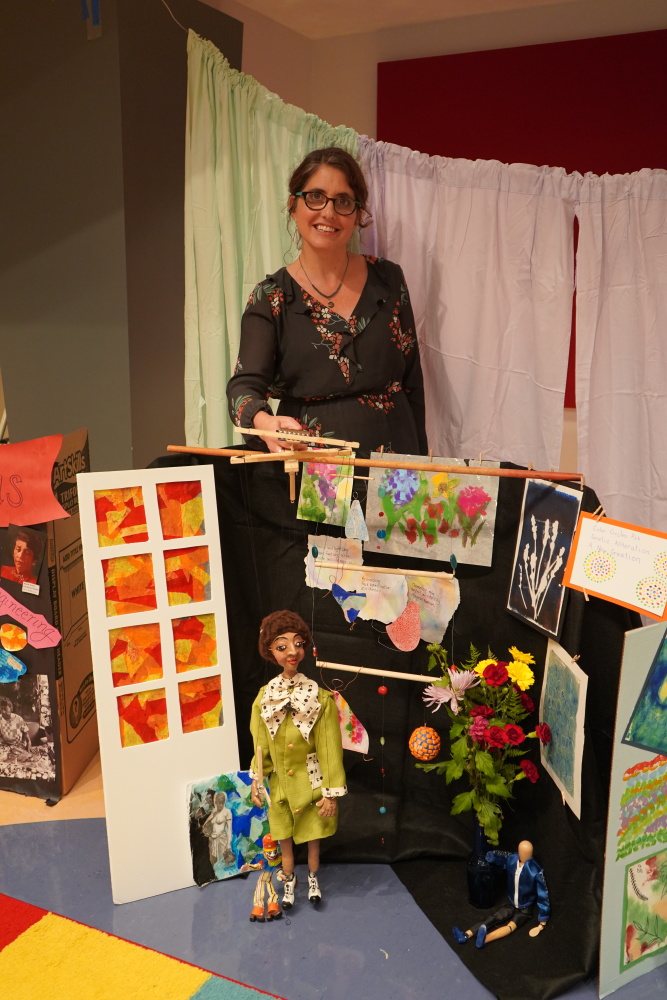
Dr. Natalia Pilato, PhD, created a marionette puppet of Alma W. Thomas. Photo by Tori Walker, 2021 summer intern.
Over the course of three days, educators examined the multifaceted work on view in the Chrysler’s summer exhibition, Alma W. Thomas: Everything Is Beautiful. Thomas’s artistic practices extended to every facet of her life, including the classroom at Shaw Junior High School in Washington, DC, where she taught art for thirty-five years.
When designing lesson plans and building a curriculum, teachers often highlight an artist and share examples of their work. The Summer Teacher Institute took this common practice to another level. An exhibition of the size and detail of Alma W. Thomas: Everything Is Beautiful invites teachers to discover various entry points while staying true to the artist’s interests and processes.
Natalia Pilato, PhD, a community-based artist and the art education program director and assistant professor at Old Dominion University, turned to Thomas’s work to create a dynamic and inspired itinerary for the Chrysler’s Summer Teacher Institute participants. “I loved the level of detail and thought that went into each activity,” stated one educator.
With the continuous reminder of “What Would Alma Do?” Pilato set the stage for teachers to consider the person behind the works on view in the Chrysler’s summer exhibition. Alma Thomas explored gardening, poetry, puppetry, costume design, set design, painting, storytelling, and teaching as intertwined and simultaneous creative endeavors. Each facet of her interests played a role in Pilato’s itinerary for this workshop. Teachers completed solo projects and worked collaboratively in the galleries and the Chrysler’s Education Workshop, which was transformed into an art studio, to generate ideas and experiment with media.
On the first day of the Institute, Seth Feman, PhD, the Chrysler’s deputy director for art & interpretation and curator of photography, led a discussion in the galleries to share stories and answer questions. He detailed her role as a teacher and her influence as an artist, and he answered questions related to her sources of inspiration in addition to elements of her biography. “My favorite part was the gallery tour with Seth. I learned so much about Alma, the why/where/how behind her work. Amazing!” one teacher shared. He also joined small groups of teachers in the Modern and Contemporary Galleries to extend the investigation around Alma Thomas’s many interests, such as time, nature, atmosphere, and color. Feman worked with one group to link Jennifer Steinkamp’s video, Orbit 3 (2009), to Thomas’s use of color and shape to abstract nature and its many patterns and rhythms. Teachers wrote poetry in response to their discoveries and to process their connections.
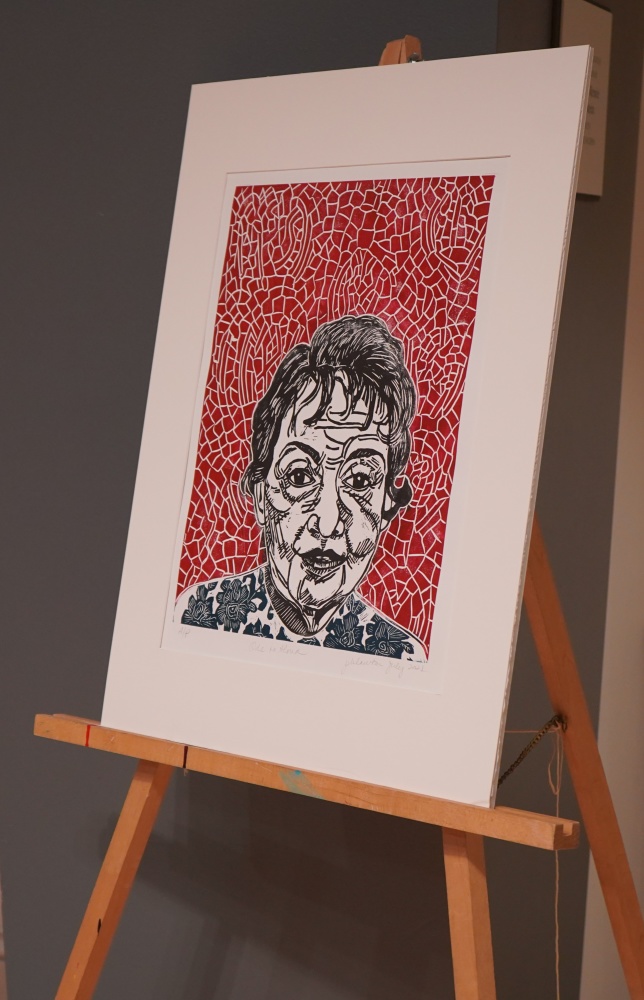
Pamela Harris Lawton, Ode to Alma, 2021, Woodcut on paper, Photo by Tori Walker, 2021 summer intern
Day two was an immersive whirlwind. The teachers experimented with a variety of materials and methods, moving from station to station to gather ideas and test techniques. Stations included: translucent collage, color field studies, monotyping, and marionettes with backdrops. Pamela Lawton, MFA, EdDCTA, the Maryland Institute College of Art’s Florence Gaskins Harper endowed chair in art education, modeled printmaking and collage and transfer techniques. She also created a gorgeous print of Alma Thomas. Lawton shared processes that can be easily scaffolded and adapted to the classroom, and she encouraged layered experimentation. For example, students of any age would enjoy monotyping, or the process of applying colored ink to a slick surface, drawing into that wet ink, and experiencing the “wow” moment of pulling the paper up to reveal an image. The teachers also spent open-ended time in the galleries. At the conclusion of the day, they shifted to reflecting and synthesizing what they had learned and experienced. As in Thomas’s classroom, the teachers worked together to share their discoveries through dynamic performance.
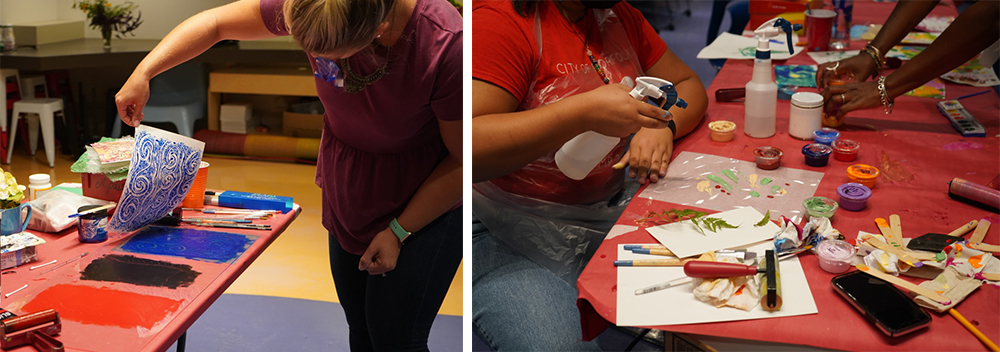
Teachers experimented with two methods of monotyping during the Summer Teacher Institute. Photos by Tori Walker, 2021 summer intern
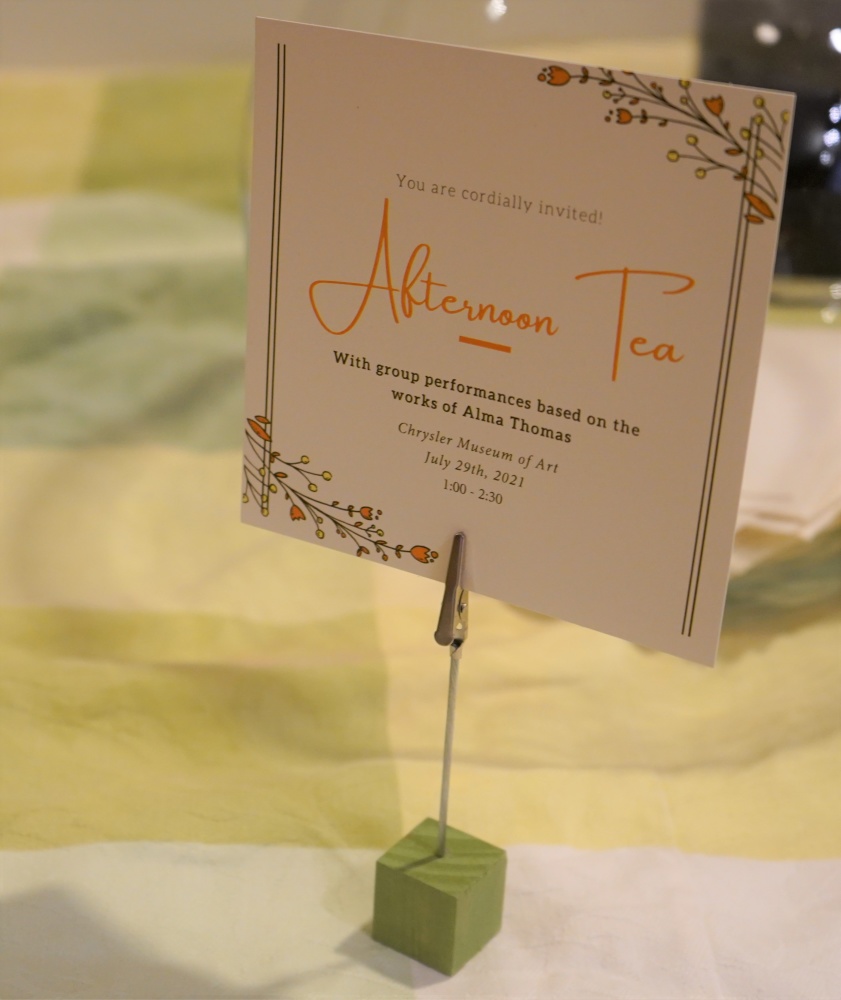
Afternoon Tea, Photo by Tori Walker, 2021 summer intern
With afternoon tea brewing, teachers entered what was once their art studio to find a space transformed into a theater. After the morning wrap-up and preparations, each group of teachers gathered their backdrops and props to celebrate and display their knowledge with a performance. Integration of subjects and disciplines kicked off the thematic presentations with educators sharing the interconnectedness of art to all other subject areas. A collaborative mobile included individual interpretations of themes or methods observed in Thomas’s works. A different group shared Alma Thomas’s optimism and her ripple effect on the world. This group used Pilato’s marionette to bring their scene to life. By incorporating negative space into their backdrop, another group used the metaphor of windows to unpack Thomas’s themes and created a marionette of the artist in her signature block-patterned dress. The final presentation introduced a STEAM lens to explore connections between people, interests, and school subjects. Through these playful and poignant presentations, teachers learned from each other and had a chance to borrow different ways of engaging with the same source of inspiration.
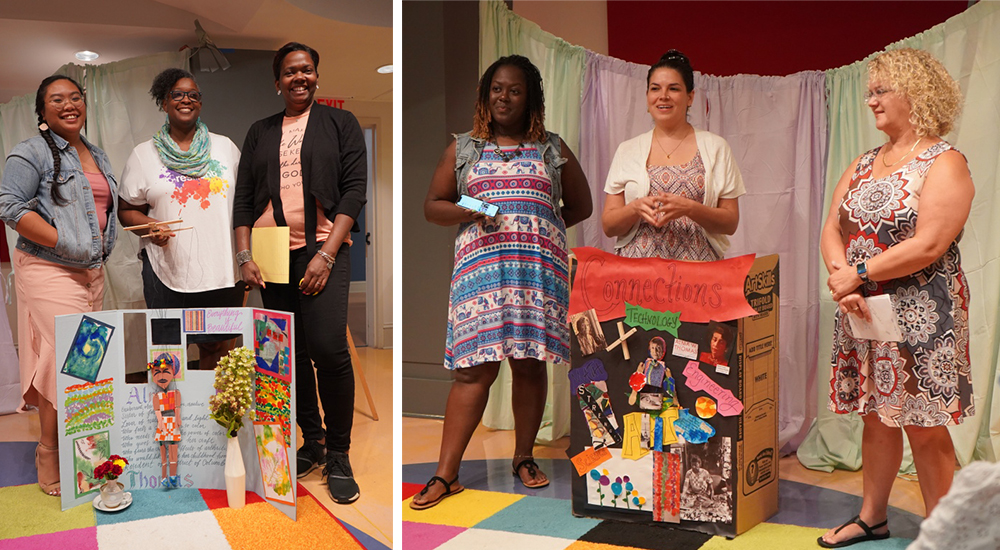
Groups of teachers shared their creations inspired by Alma Thomas and the lessons they learned during the Summer Teacher Institute. Photos by Tori Walker, 2021 summer intern
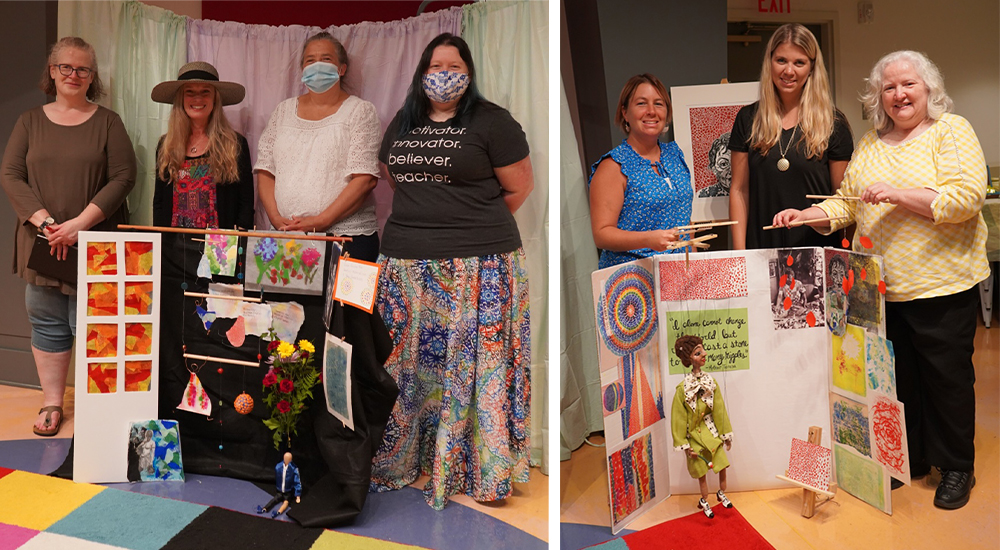
Museum experiences such as the Summer Teacher Institute support teachers in their professional and personal growth. “Knowing the background behind Alma’s work will enrich my teaching beyond creating a final project,” one teacher said. “I am inspired by her teaching/artmaking career and will mirror it in my own life.”
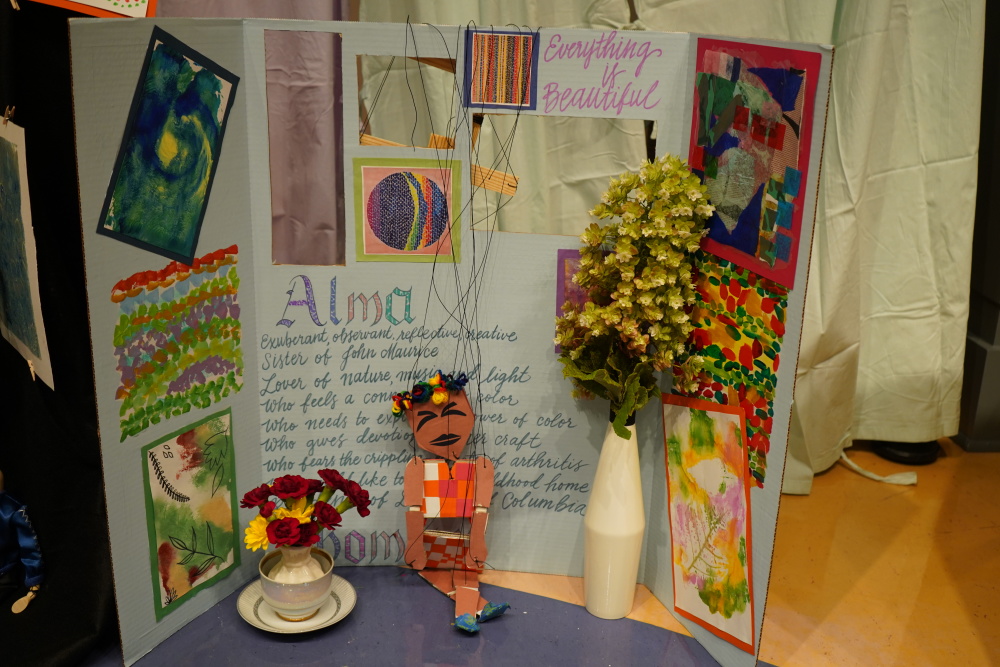
One group of teachers created an Alma W. Thomas teaching stage with a puppet and props. Photo by Tori Walker, 2021 summer intern
The Chrysler Museum of Art is dedicated to educators of all disciplines, and we are looking forward to providing various programs throughout the 2021-22 school year for teachers. Check here for the most up-to-date teacher opportunities, or contact me at ecayton@chrysler.org.

